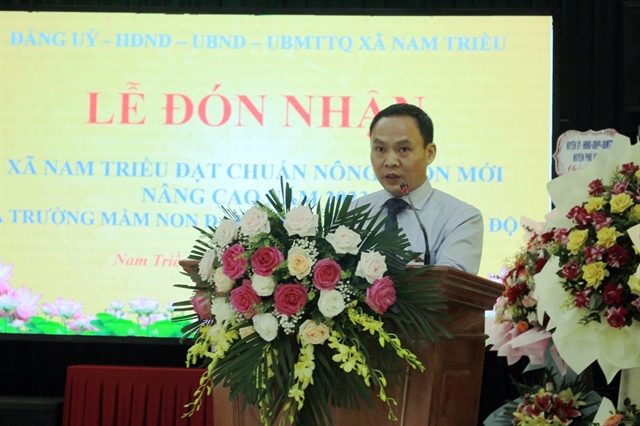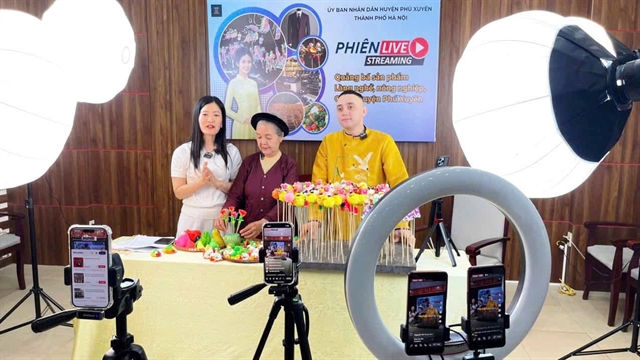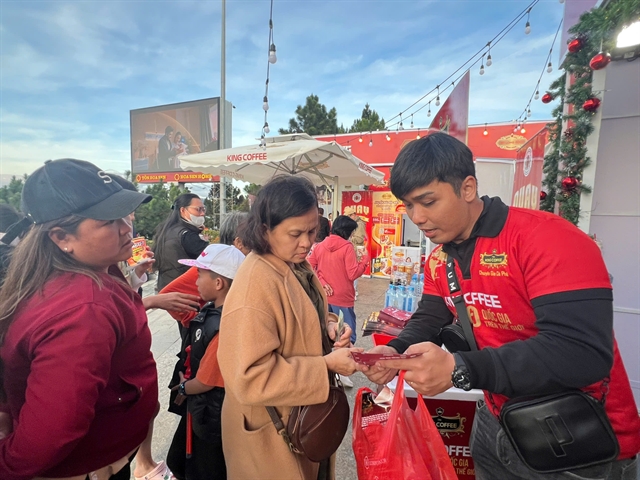 Opinion
Opinion

Once known primarily for its deep-rooted traditions and diverse craftsmanship, Phú Xuyên District on the southern edge of Hà Nội is now emerging as a shining example of digital transformation, while staying firmly grounded in its cultural heritage. Bùi Quỳnh Hoa sat down with Lê Văn Bính, chairman of Phú Xuyên District People’s Committee [Administration], to discuss the district’s journey, its thriving craft villages and bold steps towards a digital future.
 |
| Chairman of Phú Xuyên District People’s Committee, Lê Văn Bính. Photo daidoanket.vn |
Phú Xuyên is often referred to as the “Land of a hundred crafts”. Could you introduce some of the district’s traditional village strengths and economic potential?
Phú Xuyên lies in the southern gateway of Hà Nội. The district is home to many well-known traditional craft villages, including mother-of-pearl inlay in Chuyên Mỹ, tailoring in Vân Từ, rush mat weaving in Phú Túc and leather shoemaking in Phú Yên. In total, 43 villages have been recognised by the city as traditional craft villages.
Currently, all 154 villages and residential quarters in the district are engaged in handicraft production in some form. Of these, 78 have maintained and developed their crafts, including nine specialising in mother-of-pearl inlay, 10 in rush mat weaving, 10 in carpentry, and 12 in textiles and shoemaking.
Over 20,000 households and more than 40,000 people are involved in handicrafts, earning an average monthly income of VNĐ7-15 million (about US$280-600). Our products are not only appreciated domestically but have also found markets in countries such as the US, China and Japan.
 |
| Phú Xuyên provides support for craft villagers to sell their products on e-commerce platforms. Photo Sơn Tùng |
How has Phú Xuyên applied advanced technologies in production and to help local products reach wider markets, both at home and abroad?
We’ve taken proactive steps to integrate some technological advances into production to enhance product quality and meet market demands. In recent years, many craft villages have adopted digital tools to innovate product designs, improve efficiency and expand their reach. Online sales via social media platforms are becoming a norm, complementing traditional direct sales.
We’re also developing industrial clusters for handicraft production. These clusters help centralise operations, minimise environmental impacts and enhance product quality.
Our district implemented a development plan for industrial clusters and traditional craft villages for 2021–2025, offering support for households to invest in modern machinery, upgrade infrastructure and train their workforce.
In addition, the OCOP (One Commune One Product) programme is helping our products meet quality standards and tap into broader markets.
 |
| The district has held training sessions on digital transformation and AI at virtual hubs. Photo Sơn Tùng |
Phú Xuyên has been recognised as a model in digital transformation, particularly in digital admin, economy and society. Could you say more about this progress?
Innovation is our key driver, and we are leveraging digital technologies and artificial intelligence to reshape traditional industries and admin.
In the economic sector, Phú Xuyên has created a digital ecosystem rooted in traditional foundations. From a modest starting point, our digital economy reached VNĐ1.1 trillion ($42 million) in 2024. In the first quarter of this year, we hit VNĐ750 billion ($29 million), and are aiming for VNĐ2.5-3 trillion ($96-115 million) by year-end.
We’ve also established social media platforms on Facebook and TikTok. These channels serve as powerful tools to livestream and promote our handicrafts and agricultural products, attracting hundreds of thousands of followers.
Since 2023, we’ve organised hundreds of e-commerce and AI application workshops for local officials, artisans, and small-scale manufacturers. Initiatives like livestream sales have helped us bring our products to national and international audiences.
Phú Xuyên also partners with institutions like the National Economics University and University of Industrial Fine Arts to support craft villages in design, branding and digital marketing. Signature products such as Phú Yên leather shoes, Chuyên Mỹ mother-of-pearl inlay works and Tân Dân wood carvings are now being featured on major e-commerce platforms.
On the governance side, all district departments use unified digital document management systems and electronic signatures. Since October 2024, we’ve completed cashless pension and social insurance payments, and provided free bank accounts and digital signatures to residents.
Over 80 per cent of administrative documents are processed online, placing Phú Xuyên among Hà Nội’s top suburban districts in administrative reform. More than 90 per cent of adults in the district now have verified digital identities, around half use electronic payments, and one-quarter possess digital signatures.
In healthcare, we’ve completed digital health records for 98.3 per cent of the population. All medical facilities now use chip-based citizen ID cards integrated with health insurance for cashless payments.
In education, over 4,000 teachers have received AI training to enhance the learning experience. Every teacher has a digital signature and all schools have adopted cashless fee payments through Enetpay. We are piloting digital report cards at the primary level and using fully digital libraries.
To us, digital transformation is not simply a matter of technology – it’s a comprehensive revolution in mindset, organisation and service delivery. We believe it must inspire a spirit of innovation and responsibility across the entire political system.
Phú Xuyên is committed to long-term transformation, aligned with Hà Nội municipality and the nation’s broader development goals.
What are the district’s plans to integrate traditional craft villages with tourism development?
We see tremendous potential in connecting our traditional crafts with tourism business. Our aim is to become a leading craft tourism destination in Hà Nội by 2030. Tourism will be a key driver in economic restructuring, job creation, revenue generation and the development of supporting industries.
To achieve this, we are focused on several strategic actions. These include recognising and developing craft village tourist destinations, implementing action plans dedicated to craft tourism, linking craft village tours with agricultural experiences and celebrating the cultural values of such villages.
Phú Xuyên is preserving its legacy and transforming itself into a dynamic, future-ready economy. We are committed to making our traditional strengths the foundation for innovation and sustainable growth. VNS




